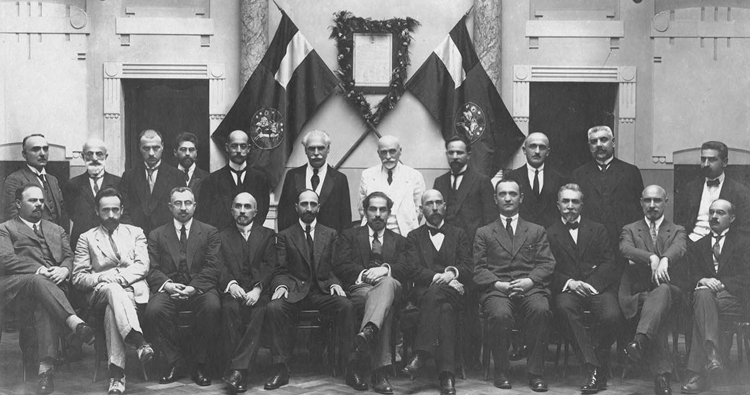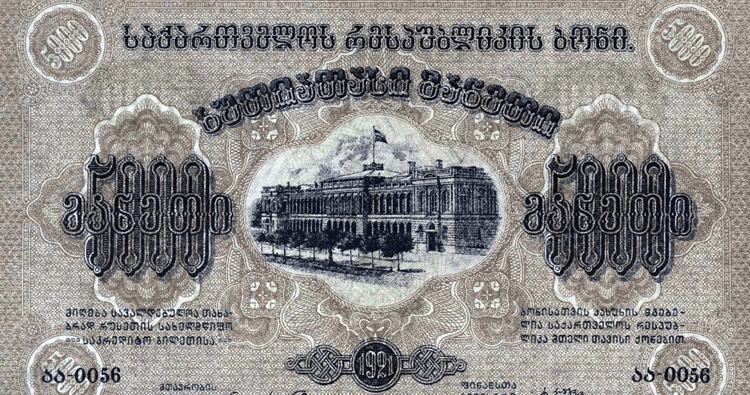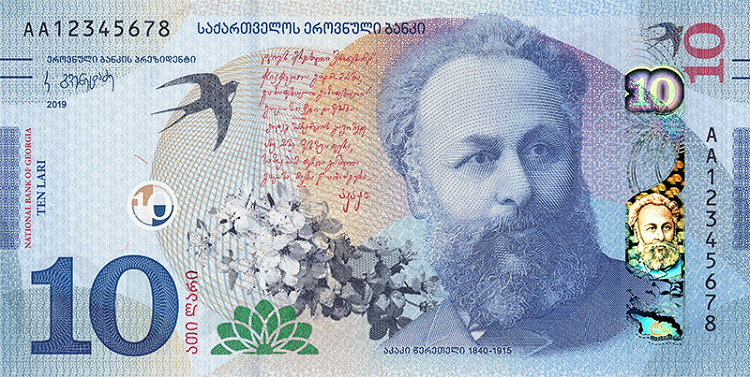Georgia’s central bank celebrates 100th anniversary in 2019

Members of the borad of the State Bank of Georgia at its launch event. Photograph preserved at the National Archives of Georgia.
This year the National Bank of Georgia (NBG) is celebrating the 100th anniversary of its foundation with number of events planned throughout the year.
Different competitions, exhibitions, conferences, and historical and cultural events will be held during the year in celebration of the 100th anniversary.
Georgia's first central bank was established in 1919.
Earlier, the Democratic Republic of Georgia did not have its own organisation for the regulation and management of a credit system.
 Used throughout the years of independence, the Georgian bond (rouble) was issued in the amount of nearly 17 million between 1919-1921. The photograph shows a bond of 500 roubles that bore facsimiles of the government chairman on the left and the finance minister of the right. Preserved at the National Archives of Georgia.
Used throughout the years of independence, the Georgian bond (rouble) was issued in the amount of nearly 17 million between 1919-1921. The photograph shows a bond of 500 roubles that bore facsimiles of the government chairman on the left and the finance minister of the right. Preserved at the National Archives of Georgia.
After the collapse of the Russian Empire, the Tbilisi Department of the former Imperial Bank of Russia was left to fulfil the duties of a central bank, having had no relations with the Imperial Bank since 1917.
The duty of the Tbilisi Department was to dispose of funds received from the Treasury in accordance with the directives of the Minister of Finance. The work was overseen by a special commissar appointed by the Minister of Finance of Georgia.
At the end of 1918, Giorgi Zhuruli, the Minister of Finance, Trade and Industry, presented a draft bill to the Republican Government on the establishment of a state bank and the relevant by-laws. However, for several reasons the Constituent Assembly postponed its approval until the end of 1919.
 The 5,000 rouble bond with notes in French and Russian languages in addition to Georgian. Preserved at the National Archives of Georgia.
The 5,000 rouble bond with notes in French and Russian languages in addition to Georgian. Preserved at the National Archives of Georgia.
At that time, representatives of financial circles believed that the independent State Bank of Georgia should be founded on new principles - the state bank should not appear to be under the influence of either private shareholders or the Minister of Finance (as was the case in Russian Banking practice). In that spirit, the State Bank of Georgia was modelled on the example of the State Bank of Sweden, which enjoyed an excellent reputation at the time.
The State Bank of Georgia only started functioning in July 1920. The main function of the bank was to ensure the stability of money circulation and the banknotes of the republic, as well as issuing short-term loans for the development of trade, industry and agriculture. Famous Georgian financier and banker Iason Lortkipanidze was elected as the First Manager of the State Bank of Georgia.
 Tweet
Tweet  Share
Share
/nbg-regulations.jpg)


/budget.jpg)



